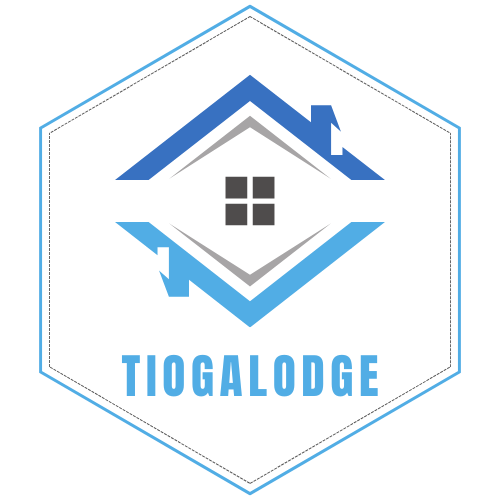Table of Contents
ToggleBuying a home is one of life’s most significant milestones and often the largest financial commitment a person will make. For many, the process can feel overwhelming, filled with jargon and complex decisions. Understanding the basics of homebuying can empower potential homeowners to navigate the journey with confidence.
From determining a budget to understanding mortgage options, each step is crucial in making informed choices. With the right knowledge and preparation, anyone can turn the dream of homeownership into reality. This guide will break down the essential elements of homebuying, making the path clearer for first-time buyers and seasoned investors alike.
Understanding Basic Homebuying
Homebuying involves a series of steps that transform one’s living situation and financial future. Understanding its key aspects helps demystify the process for both first-time buyers and experienced investors.
What Is Homebuying?
Homebuying refers to the process of purchasing a residential property. Buyers typically navigate several steps, including property search, making an offer, securing financing, and closing the deal. Buyers research market conditions, evaluate property values, and compare properties. They often engage real estate agents to facilitate transactions and provide professional insights.
The Importance of Homeownership
Homeownership offers numerous advantages that extend beyond mere shelter. It fosters financial stability, builds equity over time, and can lead to potential tax benefits. Homeowners may enjoy appreciation in property value, which can enhance overall wealth. Additionally, owning a home often instills a sense of community and belonging. Many homeowners perceive their investment as a foundation for future financial security and family legacy.
Preparing for Homebuying

Preparing for homebuying involves evaluating financial readiness and understanding credit positions. These steps create a strong foundation for navigating the housing market.
Assessing Your Financial Health
Assess financial health by analyzing income, expenses, and savings. Determine monthly take-home pay and total debt obligations to calculate the debt-to-income (DTI) ratio. A DTI ratio below 43% is typically preferred by lenders. Set a budget that includes home-related costs, such as property taxes, insurance, and maintenance. Save for a down payment, aiming for at least 20% of the home’s purchase price to avoid private mortgage insurance (PMI). Consider additional savings of 1% to 3% of the home value for closing costs.
Understanding Your Credit Score
Understanding credit scores plays a crucial role in obtaining mortgage approval. Review credit reports from each major bureau—Equifax, Experian, and TransUnion—at least three months before applying for a mortgage. Identify discrepancies and address them promptly to enhance scores. A score above 760 generally secures better mortgage terms, while a score between 620 and 760 is acceptable but may lead to higher interest rates. Maintaining low credit utilization and paying bills on time positively impacts credit scores. Additionally, avoid opening new credit accounts during the homebuying process, as this can lower scores temporarily.
The Homebuying Process
Understanding the homebuying process simplifies decision-making for potential homeowners. It involves several key steps that guide buyers from budgeting to closing the deal.
Setting Your Budget
Setting a budget involves assessing finances to determine what a buyer can afford. Buyers should analyze income, expenses, and savings to establish a realistic price range. Establishing a clear budget facilitates searching for properties within financial means.
- Calculate all monthly expenses, including mortgage payments, insurance, property taxes, and maintenance.
- Factor in the down payment, typically around 20% of the home’s price for avoiding private mortgage insurance (PMI).
- Include additional costs, such as closing costs, which can range from 2% to 5% of the home’s price.
- Adjust the budget based on the debt-to-income (DTI) ratio, aiming for a DTI below 43% for improved mortgage approval chances.
Finding the Right Property
Finding the right property requires strategic research and careful evaluation. Buyers should begin by identifying their needs and preferences, which streamlines the search process.
- Define location criteria, including proximity to schools, workplaces, and amenities.
- List specific features desired in a home, such as number of bedrooms, layout, and yard size.
- Explore online real estate listings and utilize various platforms for comprehensive market views.
- Engage a real estate agent to gain expert insights and access to off-market properties.
- Attend open houses to evaluate listings in person, helping to determine suitability and value.
By systematically setting a budget and defining property preferences, buyers navigate the homebuying journey with greater confidence and clarity.
Navigating Financing Options
Understanding financing options simplifies the homebuying process. Comprehending different mortgage types and the importance of pre-approval versus pre-qualification equips buyers for informed decisions.
Types of Mortgages
Buyers encounter various mortgage types, each with distinct features:
- Fixed-Rate Mortgages: These loans maintain the same interest rate throughout the term, typically 15 to 30 years, providing predictable monthly payments.
- Adjustable-Rate Mortgages (ARMs): These loans offer an initial fixed interest rate for a specific period, then adjust periodically based on market conditions, which can lead to fluctuating payments.
- FHA Loans: Backed by the Federal Housing Administration, these loans cater to first-time buyers with lower credit scores and allow down payments as low as 3.5%.
- VA Loans: Available for veterans and active-duty military, these loans offer favorable terms, often requiring no down payment and no private mortgage insurance (PMI).
- USDA Loans: Designed for rural homebuyers with low to moderate income, these loans provide 100% financing options without a down payment, focusing on eligible rural areas.
Pre-Approval vs. Pre-Qualification
Understanding the distinction between pre-approval and pre-qualification enhances financial readiness:
- Pre-Qualification: This process offers an estimate of how much a buyer might borrow based on self-reported financial information. It’s a preliminary step and doesn’t involve a credit check, providing a basic idea of affordability.
- Pre-Approval: This step involves a thorough analysis, including a credit check and verification of financial documents. Pre-approval offers a more accurate picture of borrowing capacity and strengthens buyers’ positions when making an offer.
Both pre-approval and pre-qualification assist in determining budgets and enhance the homebuying experience.
Closing the Deal
Closing a real estate transaction represents the final step in the homebuying process. Buyers confirm all terms and conditions, finalize financing, and exchange ownership.
Understanding Closing Costs
Closing costs involve various fees associated with finalizing a mortgage. Typically, these costs range from 2% to 5% of the home’s purchase price. They include expenses such as:
- Loan origination fees: Lenders charge these fees for processing the mortgage application.
- Appraisal fees: An appraisal ensures the home’s value aligns with the purchase price.
- Title insurance: This protects against any future claims on the property title.
- Escrow fees: These fees cover the management of funds and documents during the closing.
- Inspection fees: Buyers may opt for inspections to assess the property’s condition.
It’s crucial to review the Loan Estimate from the lender, which itemizes estimated closing costs. Comparing these costs among lenders enhances transparency and allows for better financial planning.
Final Walkthrough Checklist
A final walkthrough ensures buyers confirm the property’s condition before closing. This step highlights essential aspects to verify:
- Property condition: Inspect for any damage or repairs since the initial offer.
- Included appliances and fixtures: Confirm all agreed-upon items remain in the home.
- Cleaning and maintenance: Ensure the property is clean and well-maintained.
- Utilities: Check that all utilities are functional, including water, electricity, and HVAC systems.
- Final documents: Review any necessary documentation related to the property.
Completing the final walkthrough helps avoid unexpected surprises at closing. It allows buyers to address concerns with the seller before the transaction finalizes, ensuring a smooth transition into homeownership.
Navigating the homebuying journey can be daunting but understanding the essentials makes it manageable. With careful planning and research potential homeowners can confidently make informed decisions. By evaluating financial readiness and exploring various mortgage options buyers can position themselves for success.
Homeownership offers numerous benefits from financial stability to a sense of community. As buyers embark on this significant milestone they should stay informed and proactive throughout the process. Embracing the complexities of homebuying ultimately leads to a rewarding investment in one’s future.




